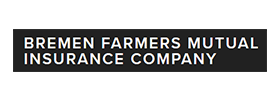Extreme heat in the Southwest is causing powerful storms in the U.S. this week. Winds up to 80mph are expected, reaching across western Oklahoma, eastern New Mexico, and western Texas. The truth is the summer, despite its warm weather and fun activities, brings extreme storms that can cause serious property damage–and we’ve seen more of these damaging events in recent years than ever before.
Did you know that 2023 marked the U.S.’s costliest year on record for severe storms, surpassing $50 billion in insured losses, according to a study released by the Insurance Information Institute? This issue is impacting everyone, and it’s even causing your home insurance rates to increase.
Regardless of the type of weather your area might be facing, heed our advice for protecting your home (and other physical assets, like your car!) against storm season. Being proactive could even help you save money on your auto and home insurance.
How is severe weather affecting my insurance rates?
As climate change intensifies, the frequency and severity of natural disasters such as hurricanes, wildfires, floods, and tornadoes have increased.
Insurance providers are facing more claims as well as higher claim costs as a result of the extensive damage being done to property, including homes and vehicles. To ensure they can continue to pay claims, insurance companies are raising premiums across the board. Homeowners in high-risk areas are particularly affected, often experiencing substantial hikes in their insurance costs or, in some cases, finding it challenging to obtain coverage at all.
The unpredictability of severe weather events complicates risk assessment for insurers. This uncertainty leads to a more conservative approach in pricing policies, contributing to higher premiums nationwide. Insurers also need to factor in the cost of reinsurance—insurance for insurers—which, just like ordinary property and casualty insurance, has become more expensive due to the increased likelihood (and severity) of catastrophic events.
What can I do?
Climate change is such a complicated issue. While you can do your part in being a good eco-warrior, severe weather won’t hold off just because you use bamboo cutlery. To protect your property, you need to be proactive–and that starts by being a good homeowner.
Before the weather hits
Even before a storm is in the forecast, it’s good to take proactive measures and fortify your home’s defence. Come spring and summer, it’s likelier that you’ll start to see high winds, heavy rain, and hail–all of which can be seriously detrimental to your property.
Always ensure your home is well-maintained. Clean out eaves troughs and downspouts regularly, and ensure that your downspouts are always extending away from your home at least six feet. Alternatively, you can set up a rain barrel to collect water runoff from your roof.
Notice any cracks in your walkways, patios, or driveways? Seal those up! It’s a good time to also look for any leaks, seepage, or cracks in the foundation of your home, crawl space, or basement. Get these repaired before the weather hits, or severe weather could just as well worsen the issues you’re already seeing and seriously accumulate the cost of repairs.
If you are scheduled for a roof replacement, consider materials that may help to reduce damage to your home. Depending on the kind of weather you experience, you might consider a metal, asphalt shingle, clay, or even a tile roof! Remember as well: the age of your roof can impact your roof’s durability, so if your roof is getting too old then it might be time to consider a new one.
When the storm is coming
Severe weather in the forecast? Doing some last-minute preparations for your home can be the difference between small repairs and major restorations–sometimes even thousands of dollars. We recommend subscribing to your local weather alerts so that you’re aware when a storm is about to hit.
If hail or high winds are in the forecast, park your car somewhere indoors or take it to a public underground parking lot where it will be safe from the impact of flying debris or ice. Be careful if you do decide to take your vehicle to an underground parking lot, as odds are, many other drivers will have the same idea and the roads might be treacherous! Also, if the hail has already started and parking your car indoors is not an option, cover it with a thick blanket to reduce the impact.
Make sure you’ve cleared all loose furniture from outside your home or brought it inside. High winds can make something as insignificant as a lawn chair a very dangerous projectile.
After the storm
After the storm, if your home has sustained damage, it may be time to consider making a claim. If the damages are small enough that you can do the repairs yourself, i.e.: a broken window, a couple of dents, or some landscaping got thrown around, you may want to avoid claiming to reduce the chances of tarnishing your current insurance record. The more claims you make, the more your insurance will increase as you’re considered a slightly higher risk.
If your home has been severely damaged, don’t re-enter until it’s safe to do so. Falling debris or roofing materials could be hazardous to you and your family members. Only re-enter when you’re allowed to. Take as many photos and videos as you can during this time, as evidence of your loss can help expedite your claim. And, finally, work with an agent! An AHI agent can guide you through this process. As stressful as making an insurance claim is, it’s that much easier with an expert in your corner.































